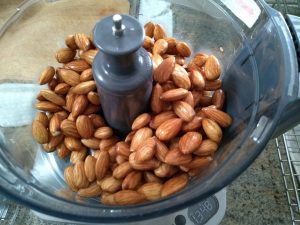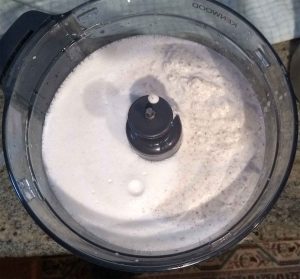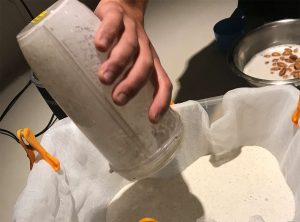It wasn’t too long ago that Almond Milk and other non-dairy nut milks were seldom seen on supermarket shelves. Soy and Rice milks dominated the non-dairy milk presence, however with their rise in consumer popularity, nut milks have taken prominence in supermarket non-dairy milk sections.
Out of curiosity, we started experimenting with Almond Milk a few years back, and really enjoyed it as a dairy alternative in our coffees and teas (especially when we couldn’t get our hands on real milk). It took extensive practice and lots of patience, but we can now also create a full bodied and thick almond milk froth with ease!
We were also surprised to learn that Almond Milk has a rich history.
According to Wikipedia, Almond Milk dates back to the middle ages and has references in Medieval Cookbooks, particularly from areas where cow milk was not commonly consumed and almonds were plentiful.
Marketed as a “healthy alternative”, Almond Milk can contain not so healthy ingredients. Many shoppers just buy the claim and don’t look at the actual ingredients and questionable additives. Although very convenient and useful, some commercial brands of Almond Milk are loaded with sugar and other ingredients like thickeners, emulsifiers, carrageenan (shown to cause inflammation and implicated in gastrointestinal issues) and other unrecognisable numbers. So it is prudent to look at the ingredient list before buying.
There is a simple, quick and super easy alternative to commercial Almond Milk… to make your own almond milk at home!
It is a fulfilling experience to get full control over the what goes into your own homemade Almond Milk, from the quality of the almonds and water, to the sweetness and choice of sweetener to the texture and creaminess of the finished product.
And we must say, that homemade Almond Milk is simply delicious!
Salute!
Ingredients / Equipment
- everECO Nut Milk Bag
- 1 cup x Almonds (activate Almonds by soaking overnight in water)
- 2-3 cups x Water (depends on how creamy and thick you like your almond milk)
- Sweetner (optional), like honey, vino cotto, sugar, coconut sugar
- Optional extras:
- Vanilla Extract
- Cacao
- Cinnamon

Method
- Place almonds in a bowl and fill with water along with a dash of lemon juice or vinegar and a pinch of sea salt. Soak almonds at room temperature overnight or for at least 12 hours.
- Drain almonds and rinse well with fresh water. Discard soaking liquid.
- Place almonds, measured water and pinch of salt into blender and blend on high for about a minute until the almonds have been pulverised.




- Strain by placing nut milk bag into a large deep bowl or jug. Pour mixed almond milk into the bag. Twist bag, and very firmly press the remaining liquid from the almond pulp. (The leftover almond pulp can be dryed using the oven or dehyradtor and used in other recipes).
- If adding a sweetener or optional extra, add the strained almond milk back into a clean blender along with the sweetener and/or extras and blend until smooth and well mixed.
- Almond milk will store well in a sealed container in the fridge. Almond Milk made with un-soaked almonds is reported to have a longer shelf life.



Have any questions or feedback. Let us know in the comment section below.
Please remember to sign up to our ‘Be A Cook, Not A Chef’ newsletter to receive our latest recipes, tours and cooking experience details, product updates and member only specials. Simply use the sign-up form below the comments section.








